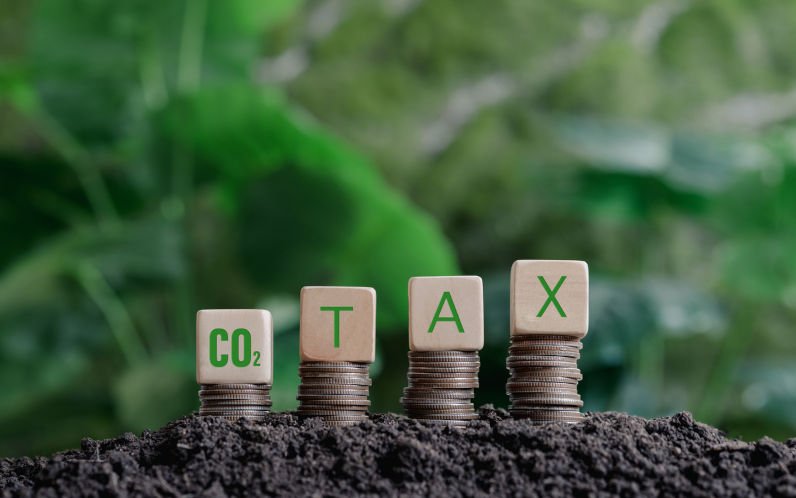Bring on our Green Industrial Revolution But watch for white elephants
February 19, 2024
Bravo to Ross Garnaut and Rod Sims for their effort at the National Press Club on 14 February to overturn the whole national debate on climate, energy, productivity and tax. But the Green Industrial Revolution may not fall easily into Australias lap.
Garnaut and Sims are right that our coal and gas exports will dwindle over the next decade or two. We need to replace them with something else we can sell to the world. Of course, they are right as well that we need a major reform of taxation, not tinkering, and that we could do with a big lift in productivity.
But how big is the potential for Australia to be a superpower of green industry?
It seems a no-brainer that Australia has exceptional solar and wind energy potential. We all know we have vast areas of sunny land and lots of windy coasts and uplands. But is it this simple?
Lets look at solar. I will quote a fascinating study by the World Bank, Global Photovoltaic Power Potential by Country, published in 2020.
Solar panels may seem to be sprouting everywhere, but in fact humans have hardly begun to harness their potential. The World Bank illustrated it thus: in the case of Mexico, all the present electricity needs could be provided by solar panels covering one tenth of one percent of the countrys land area. For Australia, the land needed is probably a similar miniscule proportion. Think about this, Mr Littleproud, before you tell us again that The bush is full.
The World Bank study uses an elaborate (but transparent) approach to assess which countries have the best potential for solar energy on an industrial scale. Seventy countries are rated as having excellent solar potential. Australia only just makes it into this group. It includes countries like Saudi Arabia, the UAE and Oman, all of which are directing large amounts of their oil and gas revenues into green industries in the hope of establishing a new industrial base before the fossil fuel era fades away. The USA is not in the list of seventy, but its South-West region might be if the analysis went below national level. Under President Bidens mis-named Inflation Reduction Act, the USA is pouring subsidies into new industries. China is similar in this respect: not one of the seventy, but by far the biggest builder of solar and wind power and investing heavily in what it sees as the industries of tomorrow. So too is India, where the Kutch peninsula in Narendra Modis home state of Gujarat is hosting a growing cluster of industries based on solar and wind power.
It is not as easy to find how our potential for wind power ranks among nations. There is so much wind to be harnessed around the worlds coasts and out at sea. But I can find no evidence that Australia is exceptional.
Professor Garnaut and Mr Sims propose a Carbon Solution Levy, to be raised on all our fossil fuel output, whether it is burnt here or exported. This would raise up to $100 billion annually. Some of this would go to households to relieve cost of living pressures. Some would end up assisting market based investment plans in the new green industries. In any case, its a lot of money.
This raises the spectre of white elephants. Think of Snowy Hydro 2.0 or Inland Rail. When our national government committed to them not so long ago, they must have seemed like good ideas. Both have turned out to be costly fiascos.
If we are to bring on a Green Industrial Revolution, it makes sense to start with industries that are anchored to Australia, as opposed to those that could go anywhere. Green iron and steel is the leading example. We have the largest iron ore resources, and they are very well located for the big Asian markets. It was good to see an announcement a few days ago that BHP, Rio Tinto and Bluescope Steel will collaborate on a project to explore the use of Pilbara ores in a direct reduction process followed by refining by electric furnace. Both stages could eventually use green energy, if the direct reduction can be done with hydrogen rather than fossil gas. Green steel could potentially become a very big export industry for Australia. Funds from the Carbon Solution Levy might play a part in accelerating its take-off.
Aluminium is another industry with good green potential. We have had a large industry for many years, based on Australian bauxite and once-cheap coal energy. The refining stage, to alumina, can be decarbonised with new sources of process heat (heat pumps, high-temperature thermal storage and possibly burning green hydrogen). The smelting stage needs large amounts of green electricity and anodes free of carbon. A new fund could help the transformation and expansion.
Zinc is another industry that could be boosted. Korea Zinc has made progress decarbonising its North Queensland operations. Copper and nickel may have potential. Professor Garnaut has referred to making green silicon.
Green hydrogen can replace that from fossil fuels in making nitrogen fertilisers.
It is in the could-be-anywhere industries, where we have no special advantage, such as export hydrogen or ammonia, that one can see white elephants marching over the horizon. It may not be a good idea to compete with Saudi money or American subsidies. We will need an authority that can look very hard at the numbers before committing the peoples money.
For more on this topic, P&I recommends:

